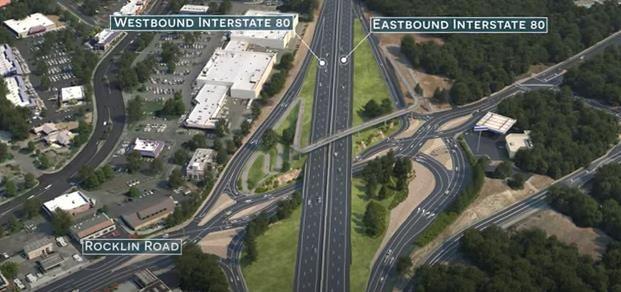
TIPs and STIPs are acronyms for transportation improvement programs at the local and state levels of government. The formal names are ‘Transportation Improvement Program’ and ‘Statewide Transportation Improvement Program.’ They both fund transportation projects and allow for the coordination of federal, state, and local funding.
TIPs are locally approved plans which have been developed by local authorities. STIPs are state projects that have been planned by departments of transportation and then designated as high priority. STIP projects require state approval, Federal Transit Administration sign-off, and a nod from the Federal Highway Administration. Each state’s STIP is developed in coordination between state authorities and local planning organizations such as Metropolitan Planning Organizations and Regional Transportation Planning Organizations. This process ensures collaboration between state officials and local leaders.
To make it all a little more complicated – a TIP project cannot receive federal support unless it is placed on the state’s STIP plan. When that happens, it is eligible for funding, which includes a combination of federal, state and local funds.
The Oregon Department of Transportation has received $29 million in STIP funding to repave a portion of the highway along I-5 between Halsey and Brownsville. The project is currently in its design phase, with construction scheduled to begin in 2024. The roadway is a critical route because it connects two major commercial highways. The project will include upgrades, modernization, and more efficient connectivity to other roadways. The objective is to improve driver safety, smooth out roads, and reduce future maintenance needs. Project components include sign and guardrail removal, decking rehabilitation along bridges, crumbling asphalt surface replacement and other upgrades.
At an estimated cost of $83 million, the Tennessee Department of Transportation is currently in the design phase of a project that will widen I-40 in Benton County. The project will expand the highway from 4 lanes to 6 lanes. Tennessee’s STIP Program supports the project as it is an initiative that has been part of the state’s overall efforts to improve this roadway for the past several years. Construction will launch after the design process ends.
A $68 million road widening project in New Hanover County, North Carolina, is set for a construction launch next summer. The North Carolina Department of Transportation is currently acquiring 161 acres of county-owned and privately-owned properties to make room for the expanded roadway. Design work has been finalized, and NCDOT is now in the process of acquiring property. Construction is planned for 2024. Solicitation documents have not yet been written, but the objective is to widen a 2-mile portion of the road from two to four lanes to improve capacity and reduce congestion. The design will include a raised median, right-out turn lanes, and traffic signals for left turns and U-turns.
The city of Rocklin, California, will decide between delivery options soon for the reconstruction of an interchange on Interstate 80 and Rocklin Road. City leaders want to reconfigure the interchange into a diverging diamond interchange (DDI) and a separate crossing of I-80. A diverging diamond interchange allows free-flowing turns when entering and exiting a roadway and eliminates left turns against oncoming traffic. It also limits the number of traffic signal phases. One option for achieving this objective carries a projected cost of $44 million and it provides pedestrian and bicycle use via a dedicated overcrossing. The second option has an estimated cost of $47 million and would deliver an undercrossing for pedestrians and bicyclists. An environmental phase will be completed in 2023 and the next step is the design phase, which will involve selecting the final configuration or option. Choosing an option for design will take significant time, which will delay construction launch and possibly postpone selecting a contracting partner until early 2026.
The Minnesota Department of Transportation has allocated $47 million for a project to expand a one-mile stretch of Highway 10 in Wadena to a four-lane road. Currently in its design phase, construction is planned for 2025, with work scheduled for completion in 2026. County Road 75 will be designed to allow drivers to make U-turns. The primary goal is to encourage commercial growth along Highway 10 in this area. Additionally, LED street lighting, improved sidewalks and other enhancements will be included in the project.
In Texas, the state department of transportation will upgrade a seven-mile stretch of US 59 near Laredo International Airport known as Bob Bullock Loop. Solicitation documents will be issued in 2024 and the project carries a cost projection of $60 million. The roadway will be upgraded to meet the current Federal Highway Administration and TxDOT design standards for interstates, bridges and frontage roads. The project will include 12-foot-wide travel lanes in each direction, 10-foot-wide shoulders on the inside and outside of the highway, a three-foot-tall divider, and overpasses at major crossings.
Kansas City residents will soon be able to enjoy a new four-block urban park atop Interstate 670. The design feature includes closing a stretch of Walnut Street to create an eastern superblock in the park. Project components include dividing the south loop link into three areas. The western block will be developed for a plaza with multiple terraces to provide gathering spaces for park visitors. The eastern superblock will include an interactive fountain plaza, an event lawn with a pavilion and stage, a food hall with outdoor dining space, dog park, prairie garden, and additional plaza and terrace space. The middle block will center on a playground structure with slides and a water feature, accessible by a pedestrian deck walkway and a two-story facility to offer retail and office space. Design work will begin in 2024.
These programs will continue to outline new upcoming opportunities for infrastructure upgrades in the coming months.

